There are various types of teas, and each one has its own color and flavor. You’ve black tea, red tea, green tea, and the lighter one, white tea.
Don’t be fooled by the name – white tea is kind of a pale yellow-green, still way lighter than the others, and it’s got this delicate taste.
Now, white tea is a bit fancy and expensive compared to the others. That might make you a bit worried about making your first cup.
And honestly, you’re right to be concerned.
Unlike the stronger teas, white tea is sensitive. It doesn’t really like it when you don’t make it right.
Its subtle flavor can get messed up if you don’t brew it properly.
So, what I’m gonna do is help you out with making the perfect cup of white tea, each time you try.
Just follow this post and you’ll be sipping on that delicate goodness without any trouble.
What Is White Tea?
White tea comes from the same plant as green, oolong, a black tea – Camellia sinensis.
When the leaves are still young and starting to bud, they’re picked and dried in the sun.
No fermenting like green or oolong tea, which gives white tea a light, sweet, fruity taste. Some people say it’s like flowers.
Getting these young leaves is a bit of a challenge.
They’re only around for the first three days of picking, and they’re covered in delicate white hairs that are precious.
Keeping those hairs intact while processing is key, and that’s why white tea is pricier.
China found white tea back in the Tang Dynasty, around 608 to 907 BC.
Back then, it was super pricey because they didn’t have fancy machines.
Only the emperor and his fancy friends could enjoy it.
Regular people didn’t get to taste it. These days, white tea is still a bit costly, but more of us can enjoy it.

6 Types of White Tea to Try!
Here are some options you might want to consider when looking for the best quality white tea:
1. Silver Needle (Yin Zhen Bai Hao)
- Delicate, silvery-white leaves.
- Plucked during early spring.
- Subtle and sweet flavor with floral notes.
- Best for those who enjoy gentle, nuanced flavors.
Related –How to Make Silver Needle Tea – Bai Hao Yin Zhen Recipe
2. White Peony (Bai Mu Dan)
- Made from top bud and first two leaves.
- Slightly stronger taste than Silver Needle.
- Balanced mix of sweet and slightly earthy flavors.
- Good choice for a bit more complexity.
Related – How to Make White Peony Tea – Bai Mudan With Food Pairings
3. Tribute Eyebrow (Gongmei)
- Deeper color and more robust flavor.
- Made from slightly older leaves.
- Mellow taste with a hint of sweetness.
- Offers a richer tea experience.
4. Noble, Long Life Eyebrow (Shou Mei)
- Made from mature leaves.
- Stronger, bolder flavor profile.
- Woody and fruity notes.
- Suitable for those who prefer pronounced flavors.
5. Fujian New Craft (DaBaiCha or DaHoaCha)
- Newer style of white tea.
- Between Silver Needle and White Peony in terms of flavor.
- Modern yet traditional choice.
- Offers a unique tea experience.
6. Darjeeling White Tea
- From the famous Darjeeling region.
- Floral and fruity undertones.
- Unique character compared to other white teas.
- Suitable for those who enjoy Darjeeling’s other teas.
Related – How to Make Darjeeling White Tea – Hot, Iced, Cold Brew!
Here’s a table to help you get started with white tea:
| Type of White Tea | Flavor Profile | Recommended for |
| Silver Needle | Delicate, sweet, floral | New white tea drinkers |
| White Peony | Balanced, sweet, slightly earthy | New white tea drinkers |
| Tribute Eyebrow | Mellow, slightly sweet | Those seeking depth |
| Noble, Long Life Eyebrow | Bold, woody, fruity | Those seeking intensity |
| Fujian New Craft | Moderately flavorful, modern twist | Adventurous tea drinkers |
| Darjeeling White Tea | Floral, fruity | Fans of Darjeeling teas |
What You Need to Make White Tea
To make white tea, you’ll need a few simple things:
1. White Tea Leaves
Get your hands on some good-quality white tea leaves.
These leaves are picked from young tea buds and minimally processed, preserving their delicate flavors and aromas.
2. Fresh Water
Using fresh and clean water is essential.
It helps bring out the subtle nuances of the white tea leaves, resulting in a more enjoyable and authentic taste.
3. Teapot or Teacup
Choose a teapot or teacup that suits your style and preference.
It’s where the magic of steeping happens, so make sure it’s a vessel you enjoy using.
4. Teaspoon
A teaspoon is handy for measuring the right amount of white tea leaves.
This ensures you achieve the perfect balance of flavor without overpowering or diluting the brew.
5. Strainer
Using a strainer when pouring your tea helps catch any loose tea leaves, preventing them from ending up in your cup and ensuring a smooth and enjoyable drinking experience.
6. Kettle or Stovetop
You’ll need a kettle or stovetop to heat the water. Boiling water to the right temperature is crucial, as it affects how the flavors of the white tea are extracted.
7. Timer
A timer is your brewing companion.
It ensures that you steep the white tea for the appropriate amount of time, allowing the flavors to develop without becoming overly bitter.
8. Optional Additions
If you prefer, you can enhance your white tea experience with a touch of honey for sweetness or a squeeze of lemon for a hint of tanginess.
These additions complement the tea’s natural flavors.

How to Make White Tea – Step-by-Step Guide
White tea is delicate and soothing, perfect for those seeking a light and refreshing cup of tea.
To make the best white tea, follow these steps:
Step 1: Preparing Quality White Tea Leaves
Start by selecting high-quality white tea leaves with vibrant green and silver hues.
These tender leaves ensure a delicate flavor profile, promising a satisfying tea experience.
If not, you can also use white tea bags as per your convenience.
Step 2: Warming Up Your Teapot
Before you begin, warm up your teapot by rinsing it with hot water.
This step helps maintain the optimal temperature for brewing white tea and enhances the overall flavor extraction.
Step 3: Measuring and Infusing
For every 8 ounces of water, use about 2 teaspoons of white tea leaves.
Heat water until it’s nearly at a rolling boil, then allow it to cool slightly to around 175°F (80°C).
Pour the hot water over the tea leaves and let them steep for about 2 to 3 minutes, ensuring a mild and refreshing taste.
Step 4: Adding Enhancements (Optional)
While white tea is delightful on its own, you can enhance the experience by adding optional ingredients.
For a twist, consider adding enhancements like a drizzle of honey, a sprig of mint, or a thin slice of citrus.
These accents can complement the delicate flavors of white tea.
Remember, though, that moderation is key to preserving the tea’s inherent characteristics.
Step 5: Savoring the Delicate Brew
Once the steeping time is complete, strain the tea leaves and pour the fragrant white tea into your cup.
Take a moment to appreciate the soothing aroma before taking your first sip.
Step 6: Reinfusion for Ongoing Enjoyment
White tea leaves can often be infused multiple times, revealing different layers of flavor with each steep.
After the initial infusion, you can reuse the same leaves for subsequent cups.
Increase the steeping time slightly with each reinfusion to fully explore the tea’s complexities.
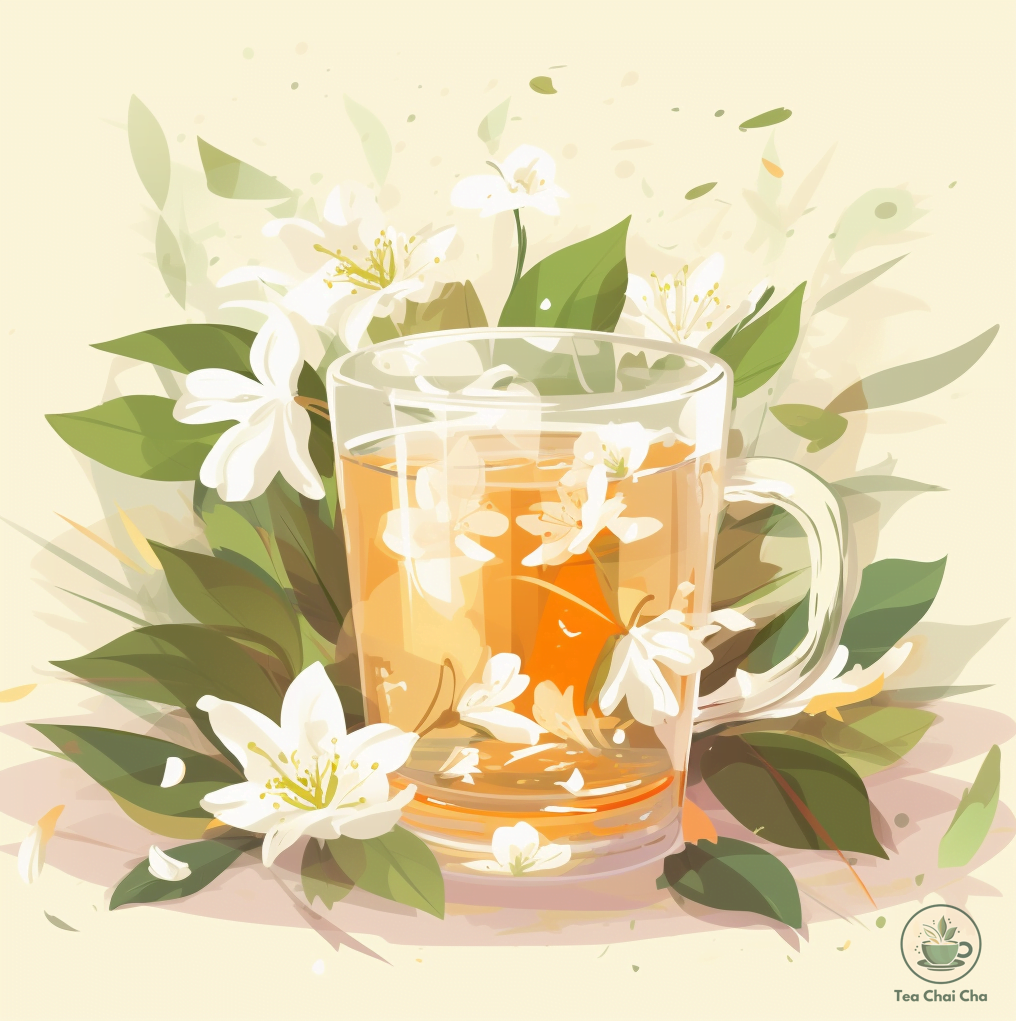
White Tea Hot or Cold?
When deciding between white tea served hot or cold, it’s important to consider your preferences and the situation.
If you enjoy a soothing and gentle experience, hot white tea might be your go-to choice.
The warm embrace of the cup in my hands and the delicate aroma that fills the air create a comforting moment.
Hot white tea can be a great companion during quiet mornings or relaxing evenings when you need a moment to unwind.
On the other hand, if you’re looking for something refreshing and revitalizing, cold white tea is an excellent option.
The chilled sensation as I take a sip is invigorating, especially on a sunny day.
Cold white tea is perfect for staying hydrated and can be a nice accompaniment to outdoor activities.
In the end, the choice between hot and cold white tea comes down to your mood and the atmosphere you want to create.
How to Make Iced White Tea
Let’s make some refreshing Iced White Tea.
There are two ways to go about it: cold brew white tea and traditional iced white tea.
1. Cold Brew White Tea Recipe
Ingredients:
- 2 tablespoons of white tea leaves (or 2 tea bags)
- 4 cups of cold water
Instructions:
- Take a pitcher or a jar.
- Put the white tea leaves or tea bags in the pitcher.
- Pour cold water over the tea leaves or tea bags.
- Stir gently to make sure the tea leaves are fully soaked.
- Cover the pitcher and let it steep in the refrigerator for about 4-8 hours (or overnight).
- When it’s ready, give it a little taste. If it’s your preferred strength, remove the tea leaves or tea bags.
- Pour the cold brew white tea into a glass filled with ice.
- You can sweeten it with honey or sugar if you like.
- Enjoy your homemade cold brew white tea!
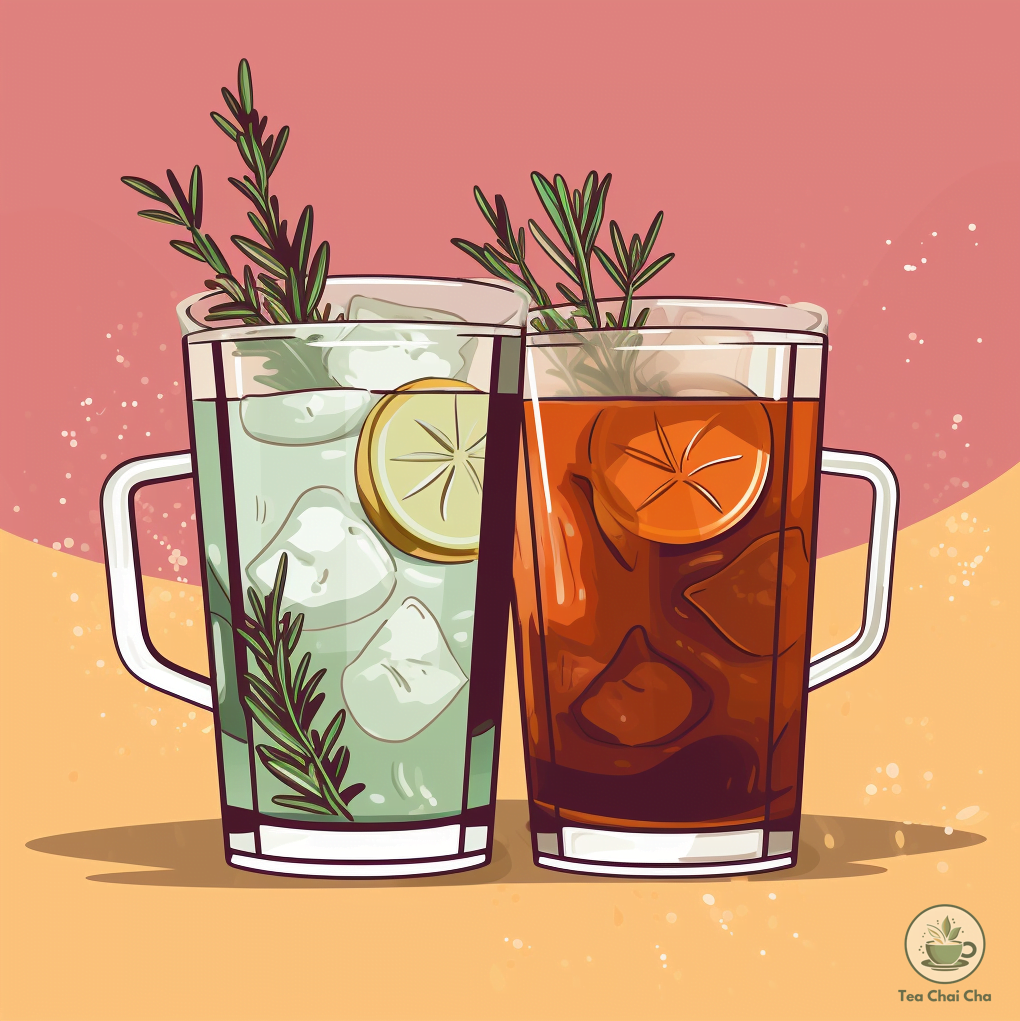
2. Iced White Tea Recipe
Ingredients:
- 2 tablespoons of white tea leaves (or 2 tea bags)
- 2 cups of hot water
- 2 cups of cold water
- Ice cubes
Instructions:
- Place the white tea leaves or tea bags in a heatproof pitcher.
- Pour hot water over the tea leaves or tea bags.
- Let it steep for about 3-5 minutes.
- Remove the tea leaves or tea bags.
- Add cold water to the pitcher to dilute the strong tea.
- Let the tea cool down to room temperature.
- Once it’s cooled, place the pitcher in the refrigerator to chill further.
- When ready to serve, fill a glass with ice cubes.
- Pour the chilled white tea over the ice.
- You can add a squeeze of lemon or a touch of sweetener if desired.
- Enjoy your homemade iced white tea!
So, whether you prefer the slow and smooth cold brew or the quick and cool traditional method, you’ll have a delicious glass of iced white tea to beat the heat!
Brewing Guide for White Tea
| Type of White Tea | Steeping Time | Steeping Temperature | Recommended Cold Brew Time |
| Silver Needle | 2-3 minutes | 175°F (80°C) | 6-8 hours |
| White Peony | 3-4 minutes | 175°F (80°C) | 8-10 hours |
| Tribute Eyebrow | 3-4 minutes | 185°F (85°C) | 10-12 hours |
| Shou Mei | 4-5 minutes | 190°F (87°C) | 12-14 hours |
| Fujian New Craft | 2-3 minutes | 175°F (80°C) | 6-8 hours |
| Darjeeling White | 2-3 minutes | 175°F (80°C) | 6-8 hours |
Factors That Affect the Flavor of White Tea
The flavor of white tea is influenced by a few important things.
Here are some important ones:
1. Tea Varietal and Cultivation
The type of tea plant and how it’s grown play a big role. Different tea plants have distinct flavor profiles.
Where the tea is grown, the altitude, and the soil also influence the taste.
2. Plucking Time
When the tea leaves are picked matters. Young leaves and buds offer a delicate flavor.
Early spring leaves might have a sweeter taste than late summer leaves.
3. Processing Method
How the leaves are processed matters.
White tea is minimally processed, so it retains more natural flavors.
The way leaves are withered, dried, and lightly oxidized affects taste.
4. Leaf Appearance
The appearance of the leaves gives hints about flavor.
Silver tips indicate a milder taste, while more leaves might lead to a stronger flavor.
5. Brewing Temperature
The water temperature when brewing affects taste.
Cooler water preserves delicate flavors, while hotter water might bring out more robust notes.
6. Brewing Time
How long you steep the tea matters.
Shorter steeping times keep it lighter, while longer times might intensify the taste.
7. Water Quality
The water used should be clean and fresh. Impurities in water can alter the tea’s flavor.
8. Storage Conditions
How the tea is stored impacts taste. Tea should be kept in an airtight container, away from strong odors.
8 Tips for Choosing the Best White Tea
When picking out white tea, there are a few things to keep in mind to make sure you get a delicious and high-quality brew.
1. Look for Silver Tips
The best white teas often have silver or white fuzzy tips on the leaves.
These tips indicate that the tea is made from young and tender leaves, which usually result in a smoother and more delicate flavor.
2. Check the Origin
Different regions produce white tea with distinct flavors.
Chinese white teas like Bai Hao Yin Zhen (Silver Needle) and Bai Mu Dan (White Peony) are quite popular and have their own unique taste profiles.
If you’re looking for a specific flavor, consider the region the tea comes from.
3. Go for Loose Leaf
Whenever possible, choose loose-leaf white tea over tea bags.
Loose-leaf tea generally contains higher-quality leaves that can expand fully during steeping, allowing you to experience the full range of flavors.
4. Aroma and Flavor
Read the packaging or product descriptions to get an idea of the aroma and flavor notes of the white tea.
Some white teas have floral, fruity, or even nutty undertones. Choose the one that appeals to your taste preferences.
5. Freshness Matters
White tea is delicate and can lose its flavor over time.
Check the packaging for the harvest date or the “best by” date. Fresher tea is likely to have better flavor.
6. Avoid Additives
Opt for pure white tea without added flavors or ingredients. This helps you appreciate the natural taste and aroma of the tea itself.
7. Read Reviews
If you’re unsure about a specific white tea, look for reviews online.
Other tea enthusiasts’ experiences can give you insights into the tea’s quality and flavor.
8. Price and Quality
While higher prices don’t always guarantee better quality, extremely cheap white tea might not provide the best flavor experience.
Aim for a balance between price and quality.

How to Make White Tea Taste Better – Flavor Variations
White tea has a light and subtle taste, so it’s important to choose the right ingredients to complement it.
Let’s explore some ways to enhance the flavor of white tea and some delicious drinks you can make with it.
Fruity Delight
To enhance the natural sweetness of white tea, add a few slices of your favorite fruits like peaches, berries, or citrus.
Let the tea steep with the fruit for a refreshing and subtly fruity flavor.
Honey Harmony
Drizzling a bit of honey into your white tea can bring a touch of sweetness and depth.
The honey complements the delicate taste of white tea, creating a harmonious blend of flavors.
Minty Freshness
Adding a few fresh mint leaves to your white tea can create a cooling and refreshing experience.
The mint’s crisp taste pairs well with the subtleness of white tea.
Vanilla Dream
A hint of vanilla extract can add a creamy and comforting undertone to your white tea.
Just a drop or two is enough to create a soothing and aromatic infusion.
Ginger Zest
Grated ginger adds a lively kick to white tea.
It provides a gentle spiciness that awakens your taste buds while still allowing the white tea’s delicacy to shine through.

As for drinks you can make with white tea, here are a few options:
Iced White Tea Lemonade
Brew white tea and let it cool, then mix it with freshly squeezed lemon juice and a touch of sweetener.
Pour it over ice for a delightful and refreshing summer drink.
White Tea Spritzer
Combine brewed white tea with sparkling water and a splash of fruit juice, like peach or pineapple.
It’s a bubbly and light option perfect for any occasion.
White Tea Smoothie
Blend brewed white tea with your favorite fruits, a scoop of yogurt, and a drizzle of honey.
This creates a creamy and healthy beverage with a subtle tea flavor.
Coconut White Tea Latte
Mix brewed white tea with coconut milk and a sprinkle of cinnamon.
Warm it up for a cozy and slightly tropical latte experience.
White Tea Mojito Mocktail
Muddle fresh mint leaves with a bit of sugar at the bottom of your glass.
Add brewed and cooled white tea, a squeeze of lime, and some ice.
Top it off with a splash of soda water for a non-alcoholic twist on the classic mojito.
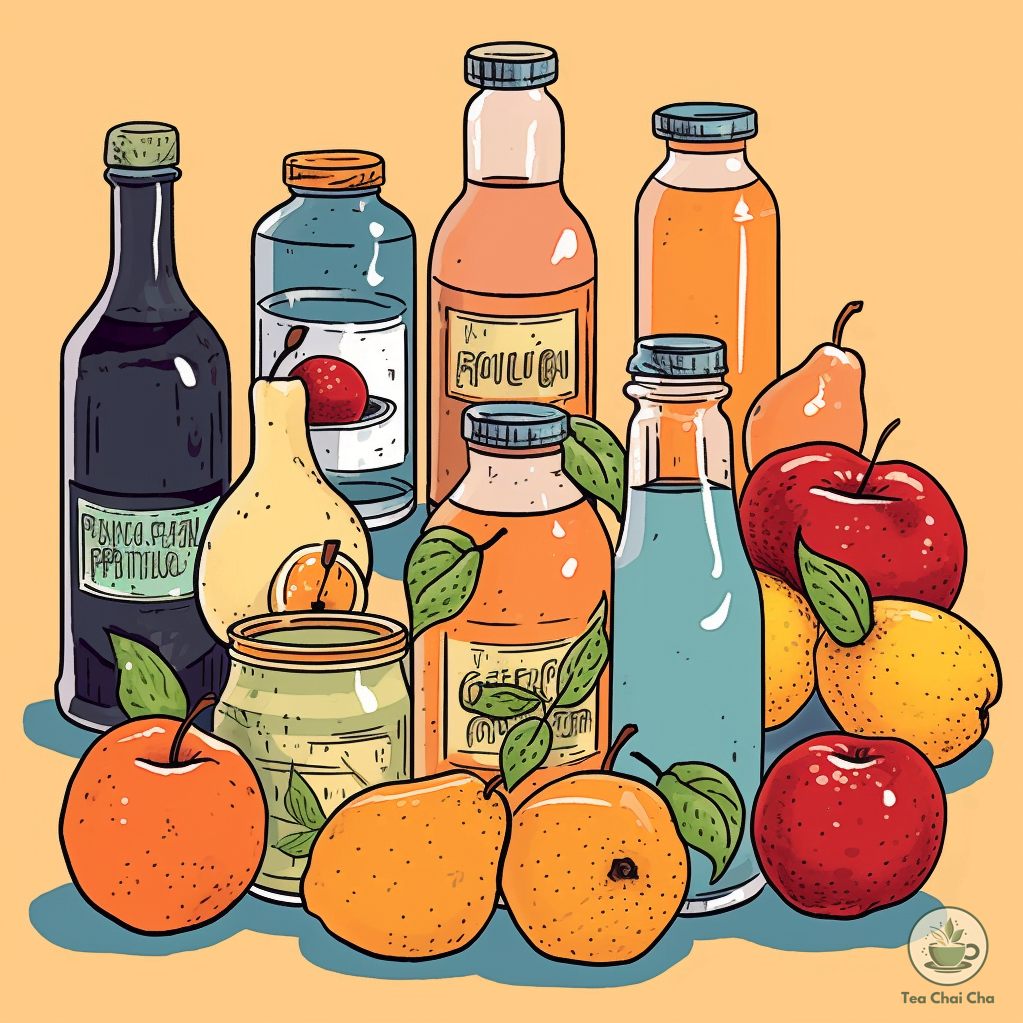
White Tea Food Pairing
Since white tea has a mild and light taste, it’s best to choose foods that won’t overpower its subtle notes. Here are a few options to consider:
Fresh Fruits
White tea’s gentle flavors go wonderfully with the natural sweetness of fresh fruits like apples, pears, peaches, and berries.
The fruity notes in the tea can complement the flavors of the fruit, creating a refreshing and harmonious pairing.
Light Pastries
Pairing white tea with light pastries such as shortbread cookies, scones, or tea cakes can create a delightful experience.
These treats won’t overpower the tea’s delicate taste but will rather enhance its subtle undertones.
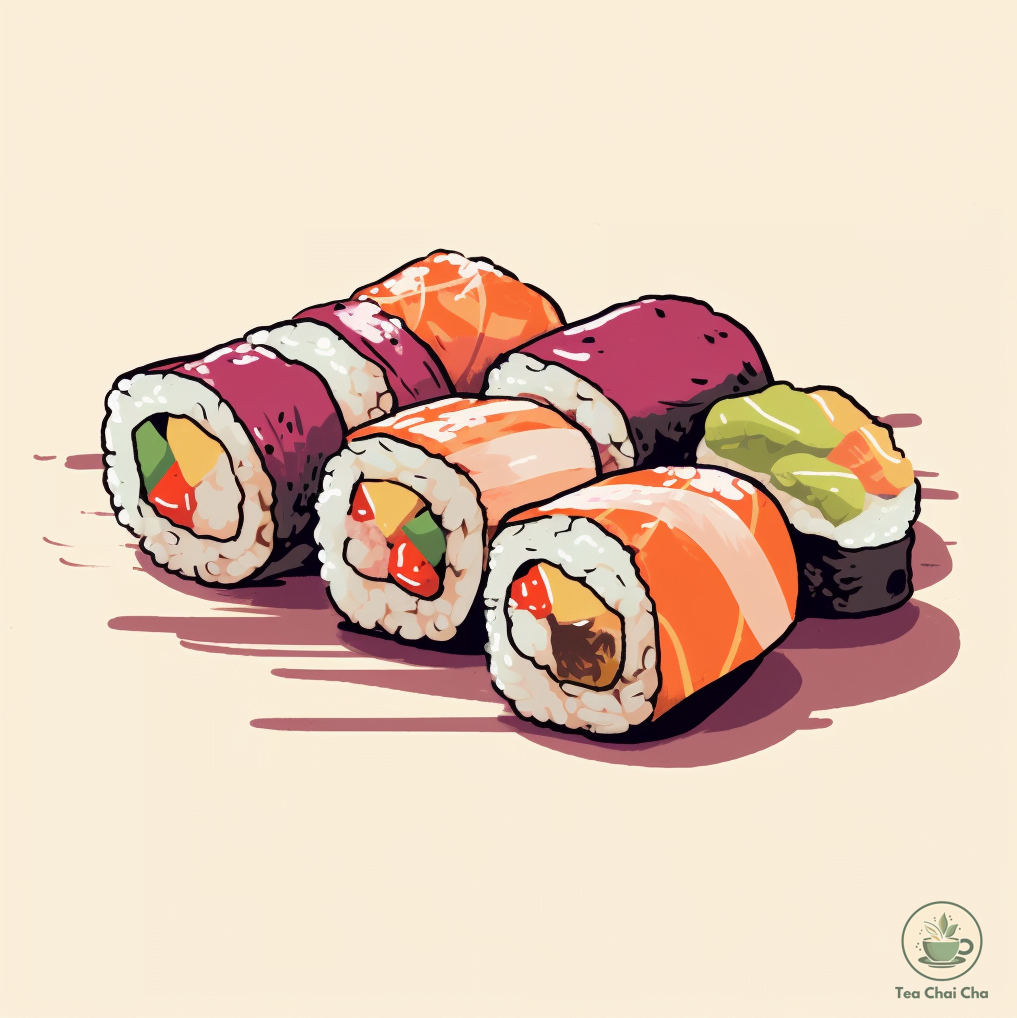
Sushi or Seafood
The light and slightly vegetal notes of white tea can beautifully complement the flavors of sushi or seafood.
The tea can help cleanse your palate between bites and provide a refreshing contrast.
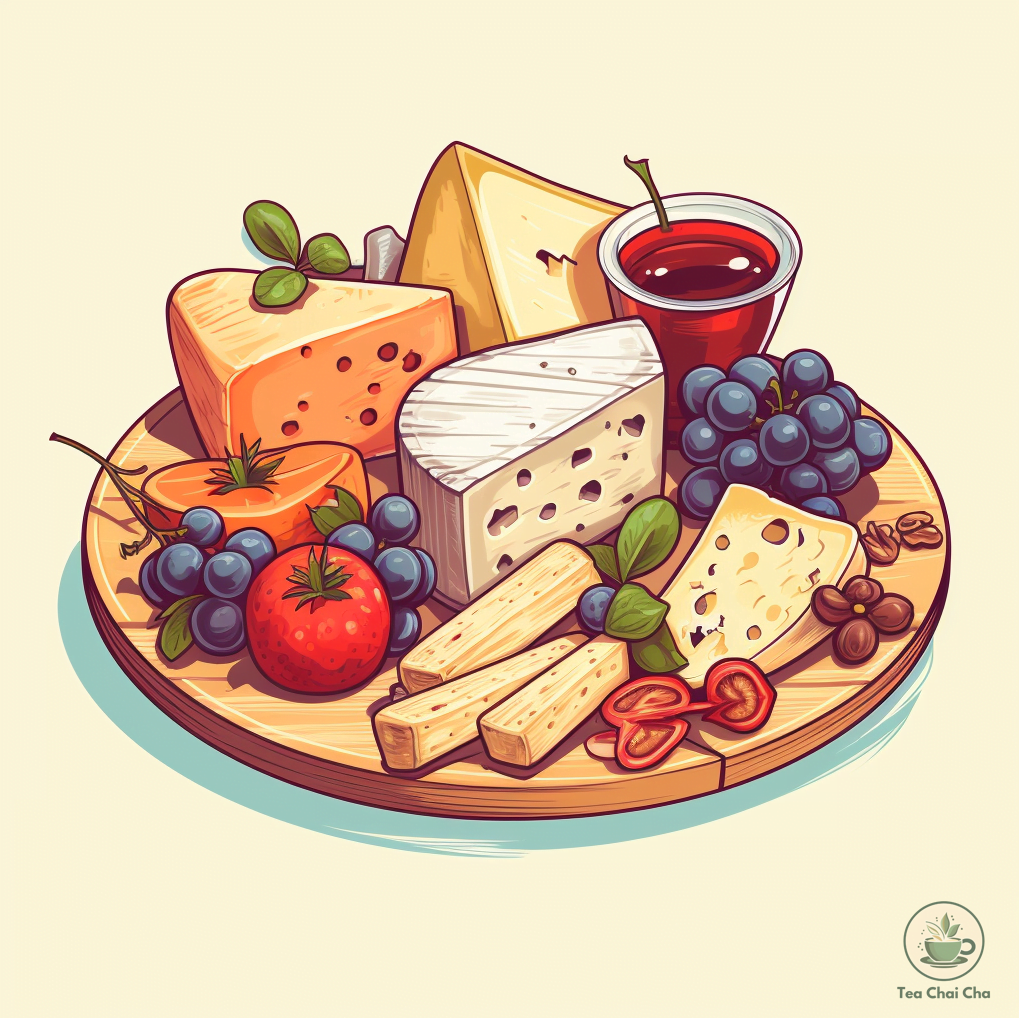
Mild Cheese
Opt for mild and creamy cheeses like brie or mozzarella.
These cheeses won’t overshadow the tea but will add a rich and velvety texture that complements the tea’s lightness.
Light Salads
Consider pairing white tea with a light salad featuring fresh greens, herbs, and a vinaigrette dressing.
The tea’s mild flavor can balance the tangy dressing and elevate the overall experience.
Poached Chicken
Lean proteins like poached chicken can work well with white tea.
The tea’s delicate profile won’t clash with the chicken’s subtlety, making for a simple and satisfying pairing.

When to Drink White Tea
White tea is a delicate and subtle tea variety known for its mild flavor and health benefits. It’s best enjoyed when you’re looking for a calm and soothing experience.
Mornings
Starting your day with white tea is a great choice.
Its gentle flavor and low caffeine content provide a soothing and refreshing way to wake up.
You won’t get that jolt like from a strong coffee, but rather a gentle energy boost.
Afternoons
If you’re looking for a light and relaxing drink during the afternoon, white tea is an excellent option.
It can help you unwind without interfering with your sleep later on, unlike higher-caffeinated beverages.
Tea Breaks
When you need a break from work or studies, white tea offers a pleasant pause.
Its subtle taste can rejuvenate your senses without overwhelming your palate.
Between Meals
Feeling a bit peckish between meals?
White tea won’t overpower your taste buds, making it a good choice to enjoy with a snack without affecting your appetite.
Evenings
While white tea contains less caffeine than black or green tea, it’s still advisable to avoid it too close to bedtime.
If you’re sensitive to caffeine, opt for caffeine-free herbal teas for your evening wind-down.
Special Moments
White tea’s delicate flavor and appearance make it perfect for special occasions.
Whether it’s a quiet moment alone or sharing time with friends, its elegance can elevate the experience.
Related
Classic White Tea Recipe
Recipe by Tania FaysalCourse: DrinksCuisine: Chinese1
servings2
minutes5
minutes2
kcal7
minutesMaking white tea is truly rewarding. All you need is quality white tea leaves and water!
Ingredients
2 teaspoon white tea leaves
1 cup water
Directions
- Boil Water: Start by boiling 1 cup of water. You can use a kettle or a pot on the stove.
- Prep Tea Leaves: While the water is heating up, measure 2 teaspoon of white tea leaves. Place them in a teapot or a heatproof cup.
- Pour Hot Water: Once the water has boiled, carefully pour it over the white tea leaves. Make sure the leaves are fully submerged in the hot water.
- Steep Tea: Let the tea steep for about 3-5 minutes. This allows the flavors to infuse into the water.
- Strain and Serve: After steeping, use a fine mesh strainer or a tea infuser to strain the tea as you pour it into your cup. This will prevent any tea leaves from ending up in your cup.
- Enjoy: Your classic white tea is now ready to be enjoyed! You can drink it as is, or you can add a touch of honey or a slice of lemon if you prefer.
Recipe Video
Notes
1. Use good quality white tea leaves for the best flavor. Silver Needle and Bai Mu Dan are popular varieties.
2. White tea is delicate, so use water that’s not boiling but rather around 175°F (80°C). This helps prevent bitterness.
3. Steep the tea for 3-5 minutes. Longer steeping can make the tea bitter. Adjust based on your taste preference.
4. Warm up your teapot or teacup before pouring the hot water to maintain the tea’s temperature.
5. Some white tea leaves can be steeped more than once. Increase steeping time slightly with each infusion.
Frequently Asked Questions (FAQs)
How to make white tea with milk?
Traditionally, white tea is not often combined with milk because its delicate flavors can be overwhelmed.
However, if you still want to try it, brew the white tea as usual and then add a small amount of milk to taste. Remember, white tea is delicate, so use a light hand with the milk.
Is white tea just hot water?
No, white tea is not just hot water. It’s a type of tea made from the Camellia sinensis plant, like black and green tea.
Usually, white tea ingredients include white tea leaves, water, and additional ingredients for taste enhancement.
Does white tea burn fat?
White tea is sometimes associated with potential weight loss benefits due to its antioxidants, but it’s not a magic solution for burning fat.
Incorporating white tea into a balanced diet and active lifestyle may contribute to overall health, but it’s not a guaranteed fat burner.
Which is better, green tea or white tea?
Both green and white teas offer various health benefits. Green tea has a grassier taste, while white tea is milder and slightly sweeter.
The choice between them depends on your taste preferences and the specific benefits you’re seeking.
What does white tea taste like?
White tea has a delicate and subtle flavor profile. It’s often described as light, slightly sweet, and refreshing.
The taste can vary based on the specific type of white tea and how it’s brewed.
Does white tea have caffeine?
Yes, white tea does contain 6-55 mg caffeine per cup. It is generally less than black or green tea.
The white tea caffeine content can vary depending on factors like the type of white tea and how it’s brewed.
Is white tea a real tea?
Yes, white tea is indeed a real tea. It comes from the same Camellia sinensis plant as other types of tea.
The leaves are minimally processed, allowing them to retain their natural characteristics.
How many calories in white tea?
White tea is very low in calories. An 8-ounce (240 ml) cup of plain white tea typically contains around 1-2 calories, making it a great option for those watching their calorie intake.
